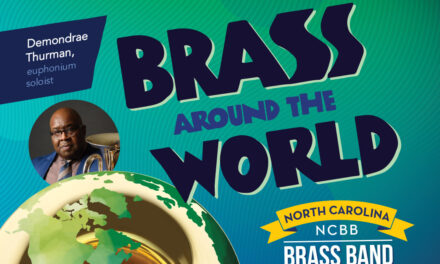Many American organists play several of César Franck’s (1822-1890) works, but few play all twelve of the Belgian-French composer’s major works. Scott Dettra, Director of Music at the Church of the Incarnation in Dallas, Texas, played all of them in two back-to-back recitals (Saturday 1/29 at 8 p.m., Sunday 1/30 at 5 p.m.) on Duke Chapel‘s renovated 1932 Aeolian organ. While the audience for the Saturday night recital was disappointingly small (c. 50 people willing to brave the sub-freezing temperature), Sunday’s attendance was likely three times that number.
Each recital lasted about 75 minutes, without intermission. Dettra played both programs from memory, no mean feat in itself. Part I included: “Pièce héroïque;” “Pastorale,” Op. 19; “Prière,” Op. 20; Choral No. 1 in E; “Cantabile;” and “Grande Pièce Symphonique,” Op. 17. In Part II, we heard Choral No. 3; Fantaisie en C, Op. 16; Choral No. 2 in B minor; Fantaisie en A; Prélude, Fugue, et Variation, Op. 18; and Final, Op. 21.
From the opening pages of “Pièce héroïque,” it was clear that Dettra is a master of this symphonic style of organ music. Having formerly been the organist at Washington National Cathedral, where he played the 1938 E.M. Skinner organ (with numerous later additions), he was totally at home with the Aeolian organ. While the Aeolian has four keyboards for the hands (“manuals”), Dettra used only three, although he transferred some of the sounds normally associated with the fourth keyboard to the other three. This was appropriate because Franck’s Cavaille-Coll organ at the Basilica of Ste. Clotilde in Paris, for which these works were composed, has only three manuals.
Thanks to Duke Chapel’s tech support crew, the audience was able to see the organist on a giant screen placed at the top of the chancel steps, with views of the performer’s hands and feet in a split-screen view. This is a welcome addition to the Duke organ recital series, for it can be fascinating to watch organists at work as they not only play notes with their hands and feet, but also manipulate the panoply of registration aids (the stop knobs, the expression pedals, the combination pistons, and more). Dettra made the majority of his stop changes by means of a device called a “sequencer,” through which one can store multiple changes of sound in advance for each work on a program and access each one sequentially by tapping a single toe stud. This device, which did not exist in 1932, was added in the Aeolian’s 2007-08 restoration.
Dettra not only played the organ, but also played the Chapel’s acoustics. Where there were isolated fortissimo chords, he allowed time for the several seconds of reverberation to subside before continuing. He skillfully handled the myriad changes of sound and mood and the constantly-shifting tonal centers of Franck’s iconic harmonic language. For example, in Choral No. 1 (the one of his major works which Franck himself never performed in public, having been injured in a vehicular accident in 1890 shortly before completing it), the first 39 measures contain some 223 accidentals (sharps, flats, naturals, double-sharps) which alter the notes from the normal scales associated with the music’s designated tonal center. For Franck, a key was like a chameleon moving about a palette of orchestral tonal colors.
An organ’s sounds will often be different depending on where a listener is. Like Washington Cathedral, Duke’s Aeolian organ, unlike the 1976 Flentrop organ at the rear of Duke Chapel, does not speak directly into the nave. What the organist hears at the console differs from what listeners in the nave hear. Perhaps the “best seats in the house” are not made available to organ recital-goers, who are not permitted to sit in the chancel into which most of the Aeolian’s pipes speak. (At the National Cathedral, those fortunate enough to arrive early are able to sit in the chancel’s choir pews, where they can hear most of the organ to best advantage.) For this reason, there were a few occasions where Dettra’s choice of pedal sounds were too quiet as heard in the nave, in the second theme of “Pièce héroïque” and in the Choral in B minor’s quiet closing bars.
That quibble aside, amidst the thousands of notes there were many highlights as Dettra wove sonic tapestries through the reverberant canvas of the Chapel acoustics: the staccato accompaniment figure in the “Pastorale,” the poetic discourse between oboe and flute in Fantaisie en C and its exquisitely-quiet adagio ending as the sounds of the organ’s vox humana (voix humaine for Franck) disappeared into the vaulting, the interweaving of contrapuntal voices in the Choral in B minor, the bravura passages of “Grande Pièce Symphonique,” and the fanfares of the boisterous Final.
These recitals were a true tour-de-force showing Dettra’s musicianship, technique, and memory to be of the highest caliber. The music, the musician, and the organ were perfectly matched in this fitting observance of the 200th anniversary of the composer’s birth. Congratulations to Duke’s Organ Recital Series director Robert Parkins and Duke Chapel for hosting this singular event, and to Scott Dettra for transporting his audience to Franck’s Basilique Ste-Clotilde to share this music which served as the beginning of French symphonic organ music.











